In this new series, HASHIM AKIB sets out four different techniques for creating stylish, modern portraits. He begins by showing how to create a likeness with minimal strokes.

Most artists agree that portraiture is the most difficult genre to conquer when drawing or painting. Achieving a large percentage of a likeness can be dragged down by minor inaccuracies. The first and most important strategy for painting portraits is don’t show what you don’t need to – in fact, this is my general rule for any artwork. The more information you convey, the more ammunition for an overly critical viewer. Obviously, you may need more accuracy with features, but you’ll be surprised what details can be left out.
Do you really need to show all the eyelashes, wrinkles, blemishes and moles? In fact, your sitter might thank you for underplaying them or leaving them out completely. You may even just concentrate on getting one eye right and blur the other, this way your focal point will be more potent. The more accurate the information you try to convey, the greater the likelihood that your concentration levels will drop – you’ll often lose interest or simply obsess about minor details until you can’t make any objective judgements.
This is the greatest gift experience has to offer: knowing what to leave out. Amateurs and technically-gifted professionals like showcasing technique and how well the mechanics of a painting work. This may include smooth transitions, accuracy throughout, naturalist flesh tints or very few exposed brush marks. Traditionally, before cameras, this is how you measured the gold standard of portraits. Unfortunately, someone invented the camera and they are everywhere nowadays, so painted portraits need to be elevated by the artist’s creative interpretations.
この記事は Artists & Illustrators の August 2019 版に掲載されています。
7 日間の Magzter GOLD 無料トライアルを開始して、何千もの厳選されたプレミアム ストーリー、9,000 以上の雑誌や新聞にアクセスしてください。
すでに購読者です ? サインイン
この記事は Artists & Illustrators の August 2019 版に掲載されています。
7 日間の Magzter GOLD 無料トライアルを開始して、何千もの厳選されたプレミアム ストーリー、9,000 以上の雑誌や新聞にアクセスしてください。
すでに購読者です? サインイン

Still life IN 3 HOURS
Former BP Portrait Award runner-up FELICIA FORTE guides you through a simple, structured approach to painting alla prima that tackles dark, average and light colours in turn
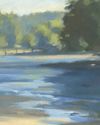
Movement in composition
Through an analysis of three masterworks, landscape painter and noted author MITCHELL ALBALA shows how you can animate landscape composition with movement
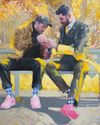
Shane Berkery
The Irish-Japanese artist talks to REBECCA BRADBURY about the innovative concepts and original colour combinations he brings to his figurative oil paintings from his Dublin garden studio
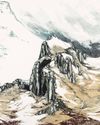
The Working Artist
Something old, something new... Our columnist LAURA BOSWELL has expert advice for balancing fresh ideas with completing half-finished work
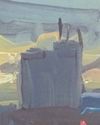
Washes AND GLAZES
Art Academy’s ROB PEPPER introduces an in-depth guide to incorporating various techniques into your next masterpiece. Artwork by STAN MILLER, CHRIS ROBINSON and MICHELE ILLING
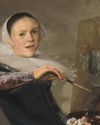
Hands
LAURA SMITH continues her new four-part series, which encourages you to draw elements of old master paintings, and this month’s focus is on capturing hands

Vincent van Gogh
To celebrate The Courtauld’s forthcoming landmark display of the troubled Dutch master’s self-portraits, STEVE PILL looks at the stories behind 10 of the most dramatic works on display
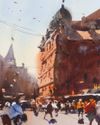
BRING THE drama
Join international watercolour maestro ALVARO CASTAGNET in London’s West End to paint a dramatic street scene
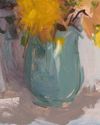
Serena Rowe
The Scottish painter tells STEVE PILL why time is precious, why emotional responses to colour are useful, and how she finds focus every day with the help of her studio wall
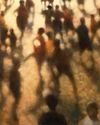
Bill Jacklin
Chatting over Zoom as he recovers from appendicitis, the Royal Academician tells STEVE PILL about classic scrapes in New York and his recent experiments with illustration